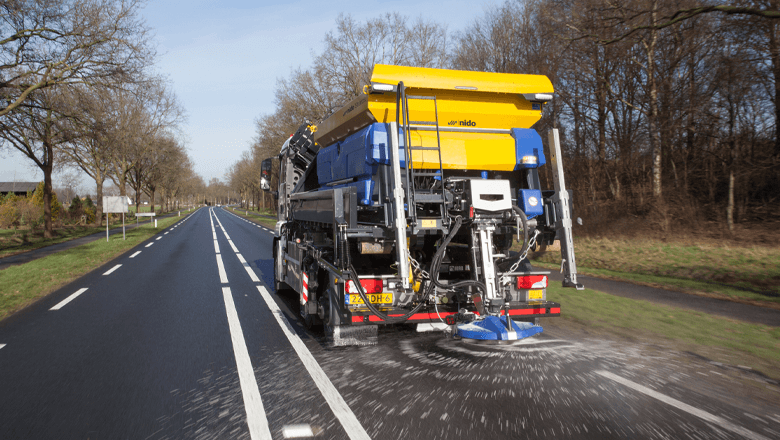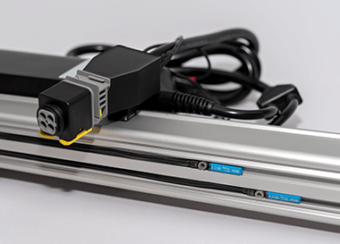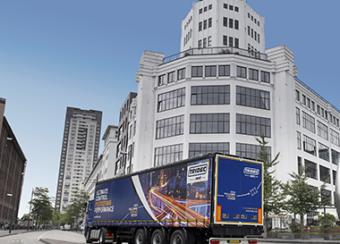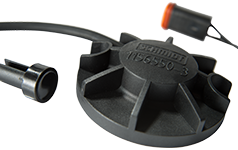Sensor solution for Aebi Schmidt gritters: zero breakdowns and half the price

The resulting sensor assembly, comprising a mechanical encoder, has now been in use for two and a half years. The results are quite astounding: there has not been a single breakdown in the meantime, while the solution is just half the price of the sensor used previously.
Problem: malfunctioning of rotary encoders due to extreme conditions
Rob Pieters, Account Manager at Sentech, explains more about the process that led to a sensor solution for Aebi Schmidt Nido: “NIDO approached us with a problem. The sensors (incremental rotary encoders) fitted to its gritters for the metering and spreading of road salt continually broke. The fact that these sensors comprise moving parts makes them susceptible to the extreme conditions (road salt, frost, moisture) and temperature fluctuations encountered. What’s more, the gritter drivers appeared to have developed a habit of using the sensor housing as a foothold on which to stand to check the level of salt remaining in the skip.”
Sentech then commenced in cooperation with Aebi Schmidt’s own engineers to devise a solution comprising a spindleless mechanical encoder: watertight, contactless, and fitted with an O-ring seal and a sturdy, low-placed housing, designed to discourage drivers from standing on it. And the sensor solution is fully compatible with all gritter vehicles already in circulation.
Analysis of problem at Sentech leads to effective sensor solution
Sentech initially approached the problem by carrying out a detailed analysis of the circumstances in which the sensors were used and the operational requirements. Mr. Pieters: “The following questions play a vital role in this regard: What does the sensor have to do? Where is the sensor fitted, and what conditions is it exposed to? Addressing them enabled us to compile a realistic schedule of requirements and preconditions. We then proceeded to select the most suitable sensor, wiring, connectors and housing. We always remain entirely frank throughout this kind of development process. If we are unable to provide a solution, then we simply say so. In such cases, I do not hesitate to refer customers to companies capable of assisting. In my experience, it takes very little effort to do someone a good turn by pointing them in the right direction.”
Mr. Pieters nevertheless admits that Sentech very rarely encounters a problem for which it cannot devise a solution. “Sentech is highly capable. And there is basically always a solution to any sensor issue. However, it does have to prove both affordable and economically viable. In Aebi Schmidt’s case, we succeeded in developing a customized sensor assembly, comprising a mechanical encoder, wiring, connectors and a sturdy housing. Not only did we expect it to yield excellent performance; but the assembly also turned out to be half the price of the original sensor.”
Zero breakdowns and half the price of the original
Two and a half years down the line, Mr. Pieters analyzed the results with a sense of triumph: “Sentech does what it promises. The objective was to sharply reduce the incidence on malfunctions. So far, we have not had a single breakdown. I would just like to add that we never make empty promises. Some sensor manufacturers are inclined to publish product specifications which are based on application in ideal conditions. We, at Sentech, base our specs on the applicable operational conditions. And we invariably take the worst case scenario into consideration.”
It is therefore quite conceivable that the sensor solution may prove to perform better than the customer ever expected. “This is what motivates us. And the result achieved for Aebi Schmidt endorses our mission: to provide true added value. While this can sometimes be achieved using a standard product, a customized solution was actually required in this particular case. We ensure that the customer is supplied with the appropriate product to resolve their problem or metering issue.”
Present our challengers with your challenge!






